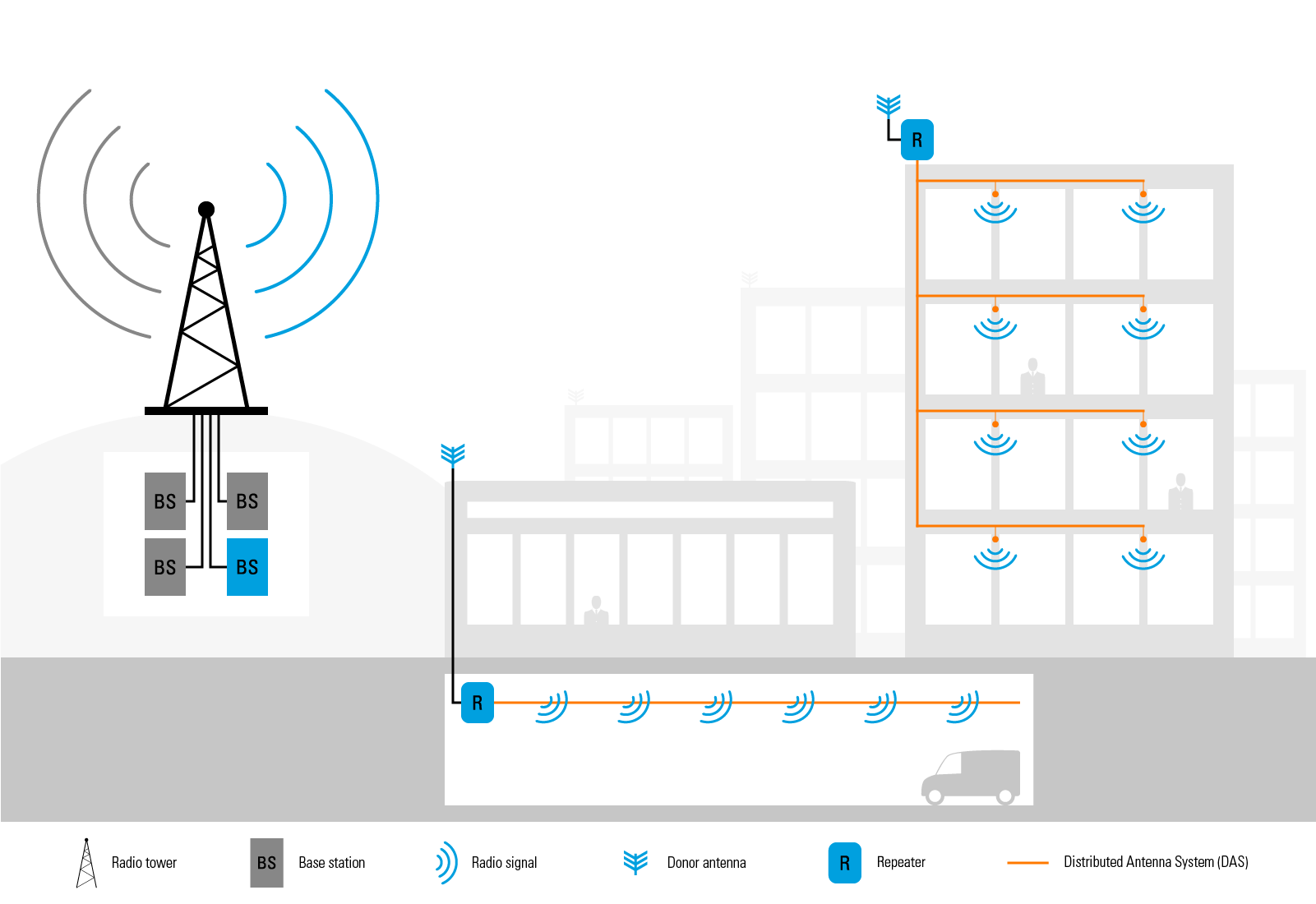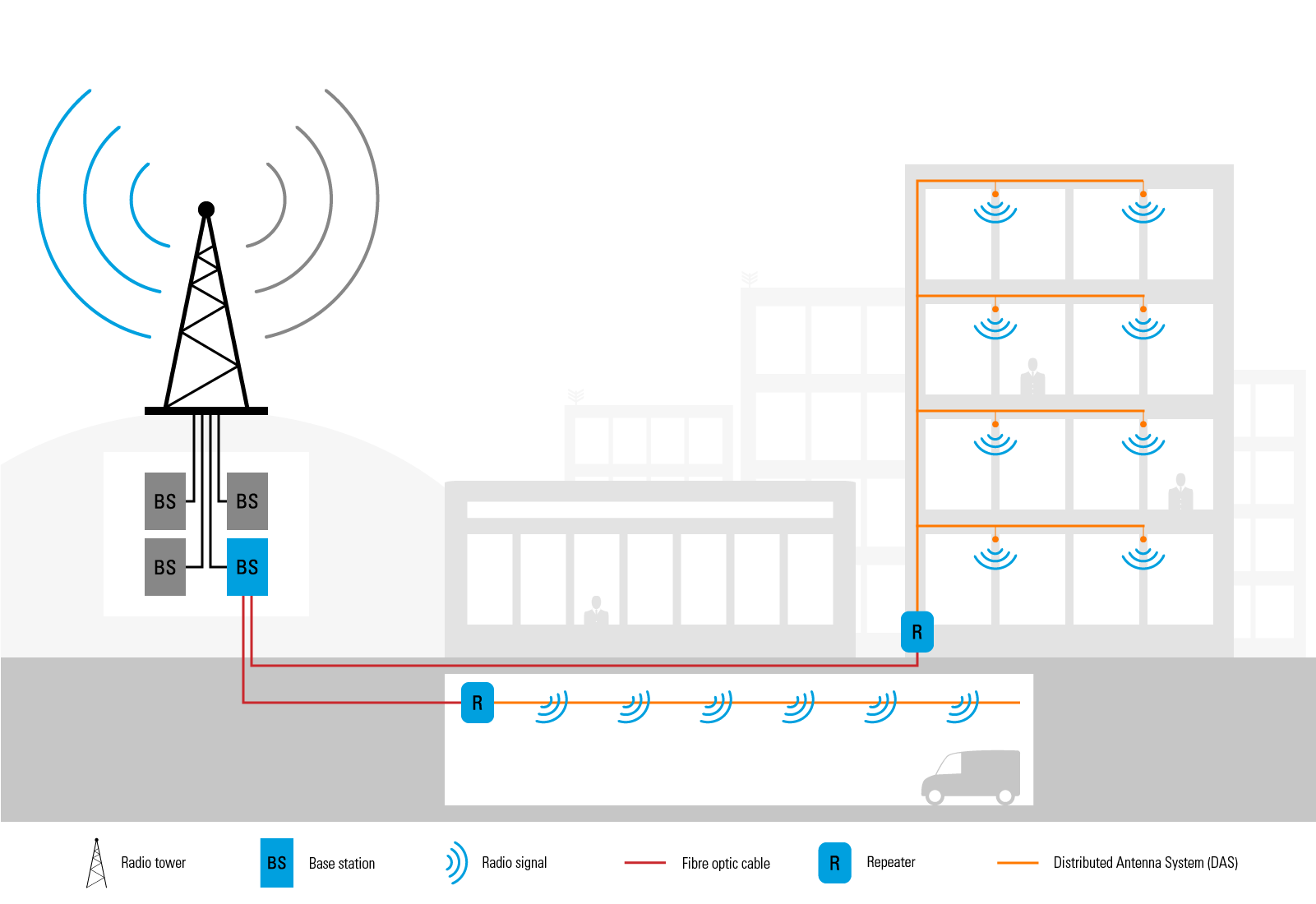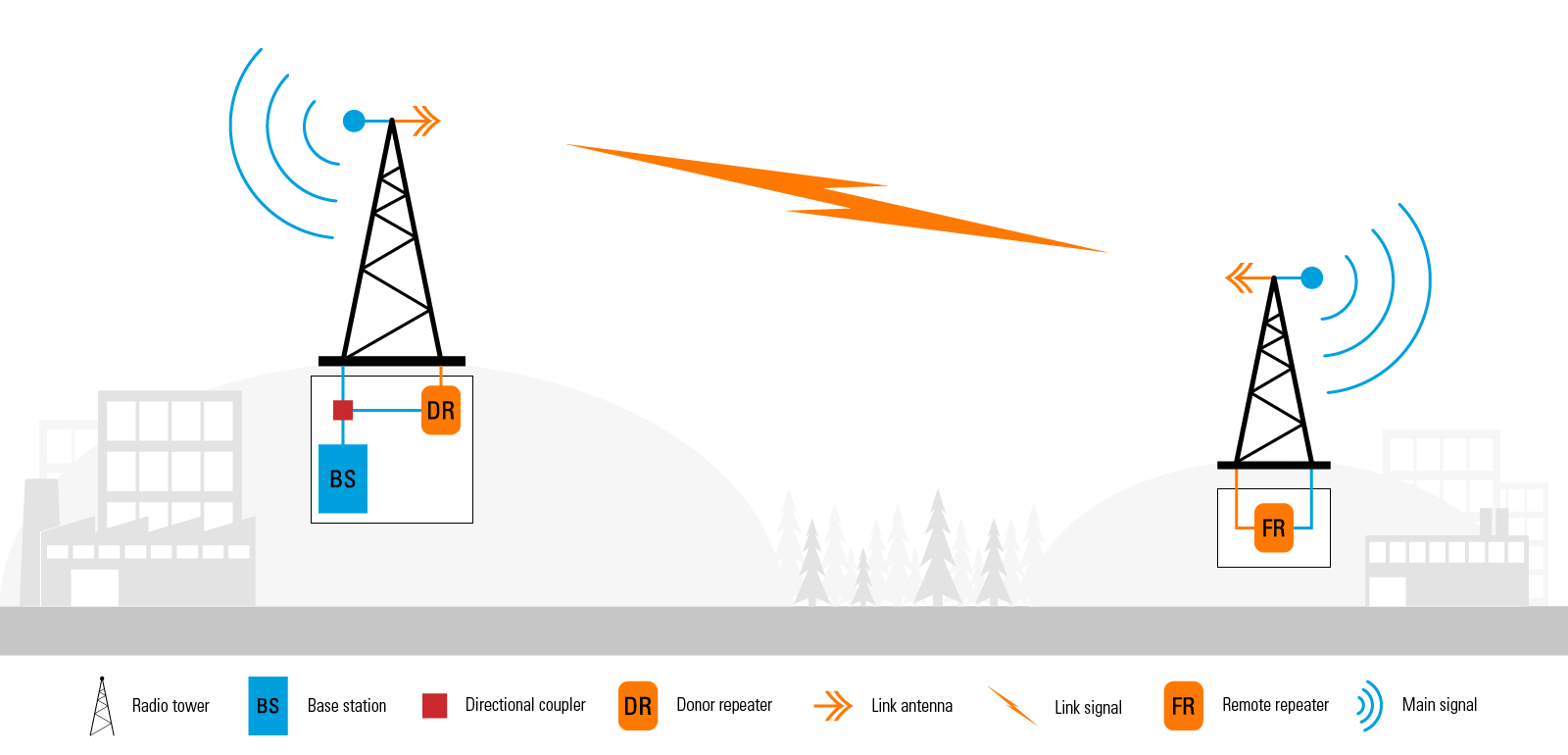Introduction to coverage extension
As we become more and more dependent on wireless communications the demand for good reception inflates among users, regardless of where they are located. This in turn increases the need for extended coverage in rural areas, underground and inside buildings.
Additionally many new buildings are well insulated to reduce energy consumption, with the consequence that they also shield radio signals. The paradox is that 80% of mobile calls today are made indoors, making it easy to understand the need to reinforce the mobile reception in shopping malls, arenas and other public real estate.
Some examples of solutions
Besides the obvious alternative to building a new radio tower, installing a new base station and laying out more cables there are three main ways to extend reach and/or improve indoor coverage. These are known as off-air repeaters, fibre-DAS and frequency translating repeater.
Off-air repeater
An off-air repeater receives signals from the original source, amplifies it and redistributes the signal through its own antenna system.

Fibre-DAS (Distributed Antenna System)
Unlike an off-air repeaters a Fibre-DAS is wired directly to the main network with a fibre optic cable, through which it receives the signal. The signal is then amplified and distributed via its own antenna system.

FTR - Frequency Translating Repeater (Frekvensöversättande repeater)
A FTR-solution is mainly used to extend range outdoors. An FTR uses the main signal from the base station which is amplified and sent to a remote receiving repeater with a directional antenna. Upon arrival, the signal is amplified once again and redistributed through an antenna system adapted to that specific environment.
